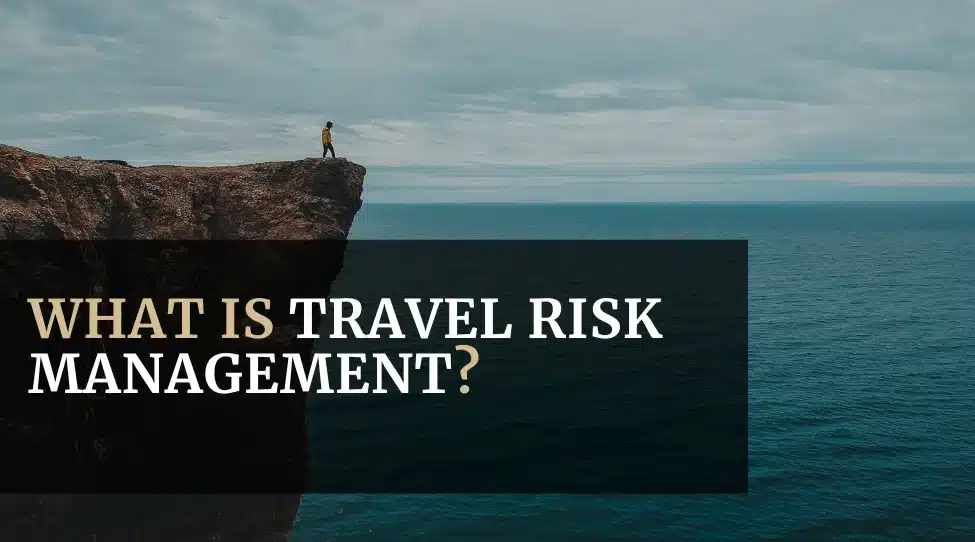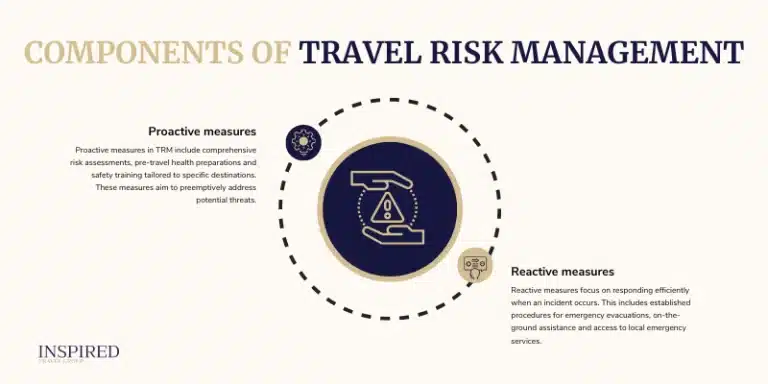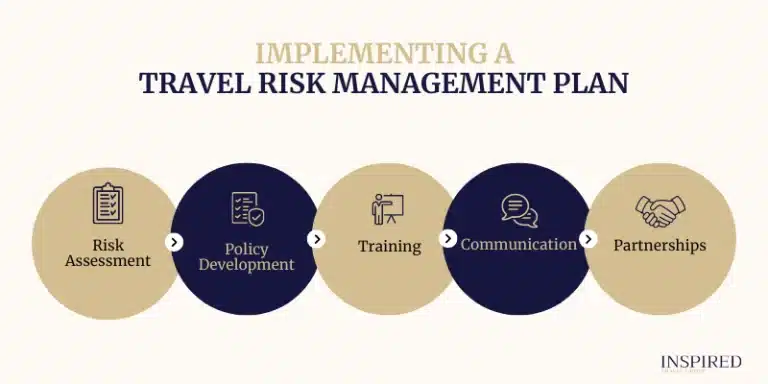
Inspired Travel Group is a full-service corporate travel agency servicing clients right the way across North America. Our people first approach to travel ensures only the highest levels of personalized, attentive service.
Travel is an essential part of global business, offering vast opportunities but also exposing employees to significant risks such as natural disasters, health emergencies and political unrest. Establishing a robust Travel Risk Management (TRM) strategy is crucial to protect employees and maintain business continuity. This blog post explores the essentials of TRM, including its components and how to effectively implement a TRM strategy.
Travel Risk Management begins with a comprehensive assessment of the risks associated with business travel. These risks vary widely and can include severe weather conditions, health crises like pandemics, political instability and being caught up in criminal activities. According to the International SOS Travel Risk Map, over 15% of business destinations are rated as having high or extreme travel security risks. Understanding these risks involves analyzing travel destinations, the nature of the business to be conducted and the personal circumstances of the traveling employees.

TRM incorporates both proactive and reactive measures to manage and mitigate risks:
One of the critical pillars of an effective TRM plan is the availability of 24/7 support for traveling employees. This round-the-clock assistance ensures that, in the event of an emergency, employees can reach out for help no matter the time zone or local working hours. Support might include changing flights, help with lost passports, legal troubles or immediate evacuation. Having a reliable point of contact provides peace of mind for both the employees and the employer. Companies like Inspired Travel Group provide 24/7 assistance, ensuring that help is always available, which is not just reassuring but potentially life-saving.

To develop an effective TRM plan, businesses must first analyze their travel needs and risks. This involves a detailed risk assessment, establishment of preventive and response strategies and regular updates and training on these procedures. Incorporating technology can also enhance TRM efficiency. Platforms like Drum Cussac and GardaWorld integrate real-time risk assessments and travel alerts into their services, helping businesses manage and communicate risks more effectively.
Steps for effective TRM implementation include:
Businesses have a legal and ethical obligation, known as ‘duty of care’, to ensure the safety and well-being of their employees while traveling. This includes complying with local and international safety standards and providing the necessary support to manage risks. Familiarity with standards like ISO 31030, which guides travel risk management, can help organizations align their TRM practices with global best practices.
Effective Travel Risk Management is essential for any organization that requires employee travel. By proactively preparing for potential risks and reactively managing emergencies, companies ensure the safety of their employees and the continuity of their operations.
Getting ready for your next adventure? Whether you’re planning a layover at Vancouver Airport or seeking seamless corporate travel management solutions, Inspired Travel Group is here to elevate your experience. Contact us today to discover how we can enhance your travel journey and ensure a smooth and memorable experience every step of the way. Let us take care of the details while you focus on making lasting memories!